When I was a young(er) man, I volunteered for a 2-year religious mission for my church. I figured/hoped that they would assign me to some francophone country as I’d spent 5 years studying French. Well, I was assigned to Hungary. Where they don’t speak French. Where they speak Hungarian. Now, in fairness, who else were they going to send? No one speaks Hungarian unless they are born in Hungary. I knew nothing about Hungary except that it was somewhere in Europe and that my dad made a dish he called “Hungarian goulash” that was basically leftover stew with a can of green beans emptied into it. And none of us liked it. But I had made the commitment to “go where the Lord needs me” and so I prepared to spend 2 years in newly liberated, post-communism Hungary. And I fell in love with the people, the culture, the language, and the country.
The Hungarians are proud of their language, their songs, their poems, their culture, and their rich, deep, long cultural history. The Magyars showed up in the Carpathian Basin over 1100 years ago from only-God-knows-where and, as a group of nomadic warriors, terrorized the surrounding Slavic, Germanic, and Romantic countries until they were forced to convert or be wiped out by their unified Christian neighbors. Despite religious assimilation, they have been culturally unique and culturally isolated for their entire known history. Through many wars, occupations, and conflicts they have persisted. Their language is unique. They revere their poets and politicians. And their food is SO GOOD. True Hungarian goulash is NOTHING like my dad’s recipe. It is SO good. I gained 30 pounds in 2 years and lost it all within a month of my return home.
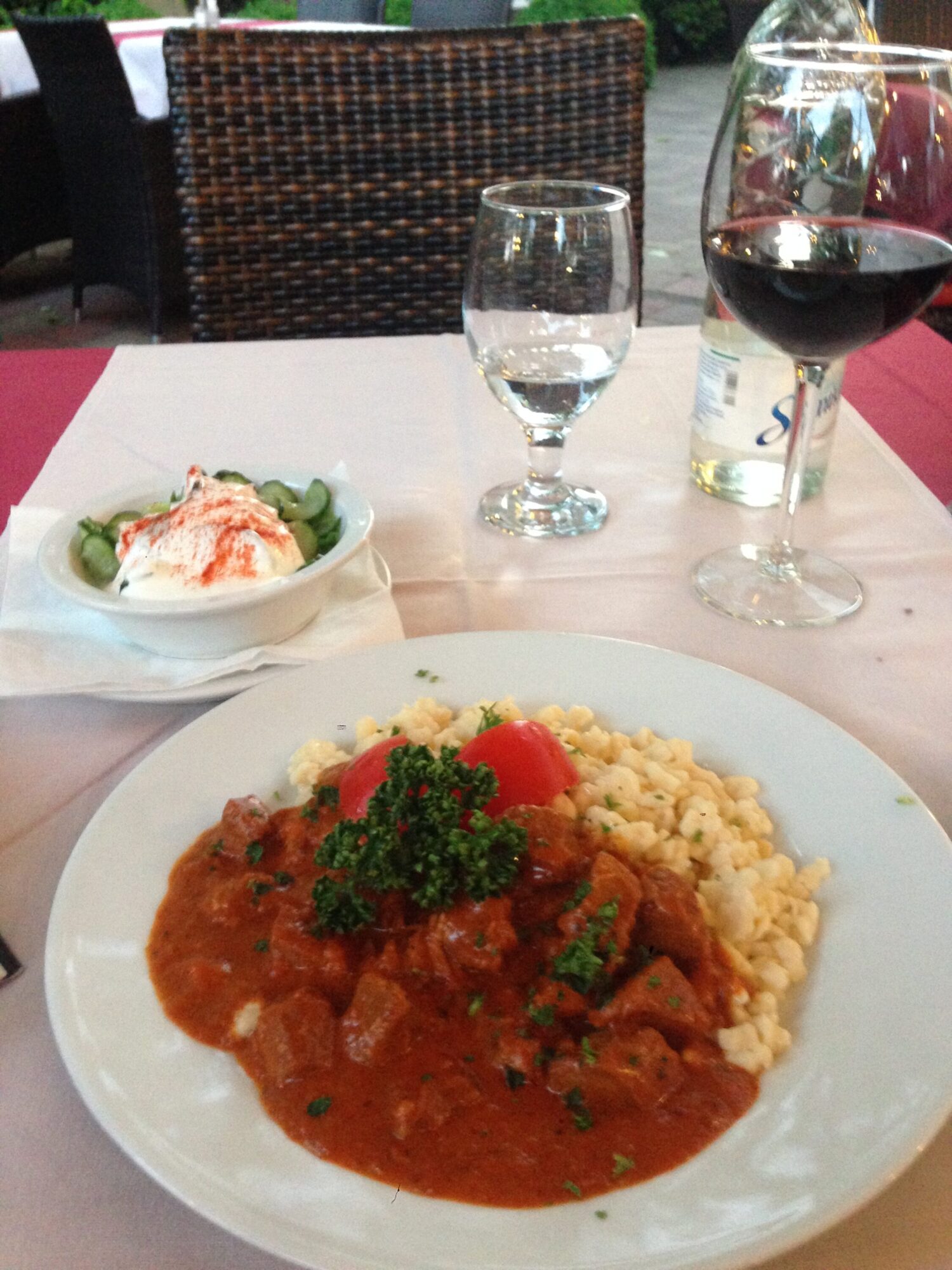


Here are just a few of the wonderful meals I enjoyed during my time in Hungary. Delicious!
For such a small country, as a cultural island, the Magyars developed a remarkable number of unique domestic breeds. Among others, they have the majestic Hungarian Grey cattle, the curly-horned Racka sheep, the wooly (and yummy) Mangalica pig, the naked-necked Transylvanian chicken, the Shagya Arabian horse and Lipizzan horse (of the Spanish riding school fame), and nine different dog breeds.

A Hungarian Grey Bull grazing.
I am an adjunct professor at the Veterinary University in Budapest and have returned many times over the past 20 years to teach. Greeting every visitor to the campus is a large, bronze statue of a Hungarian Grey Bull, which grants good luck on exams to students who rub his scrotum, but curses you with bad luck if you sit on his back prior to your successful graduation. Nestled in the heart of the campus is another circle of bronze statues representing the nine Hungarian breeds of dog: Puli, Pumi, Kuvasz, Komondor, Vizsla, Wire-haired Vizsla, Mudi, Transylvanian Hound, and Magyar Agár (greyhound). No veterinary student can underestimate the Magyar national pride in their domestic breeds.

The Hungarian Grey Bull bronze statue at the Veterinary University in Budapest.
Statues of the nine different dog breeds in Hungary.
The Hungarian government has allocated funds to breed, study, and preserve their heritage breeds. Cattle, sheep, horses, and water buffalo roam on a World Heritage site on the Hortobágy plains where they live much as they did before the Industrial Revolution. The veterinary university has active studies looking at the best ways to preserve semen from each breed. Most of these breeds are rare and there is concern for their continued preservation in an increasingly globalized culture where foreign breeds outproduce Hungarian breeds for meat, milk, and fiber, horses have a peripheral role in society, and popular foreign dog breeds are available to everyone. Hungarian families now have over 200 breeds of dog to choose from. With the exception of the Vizsla, Hungarian breeds are only marginally popular outside of Hungary. The end result has been a near extinction of some of the heritage breeds. Their rescue has been accomplished through focused breeding efforts from a few interested individuals.
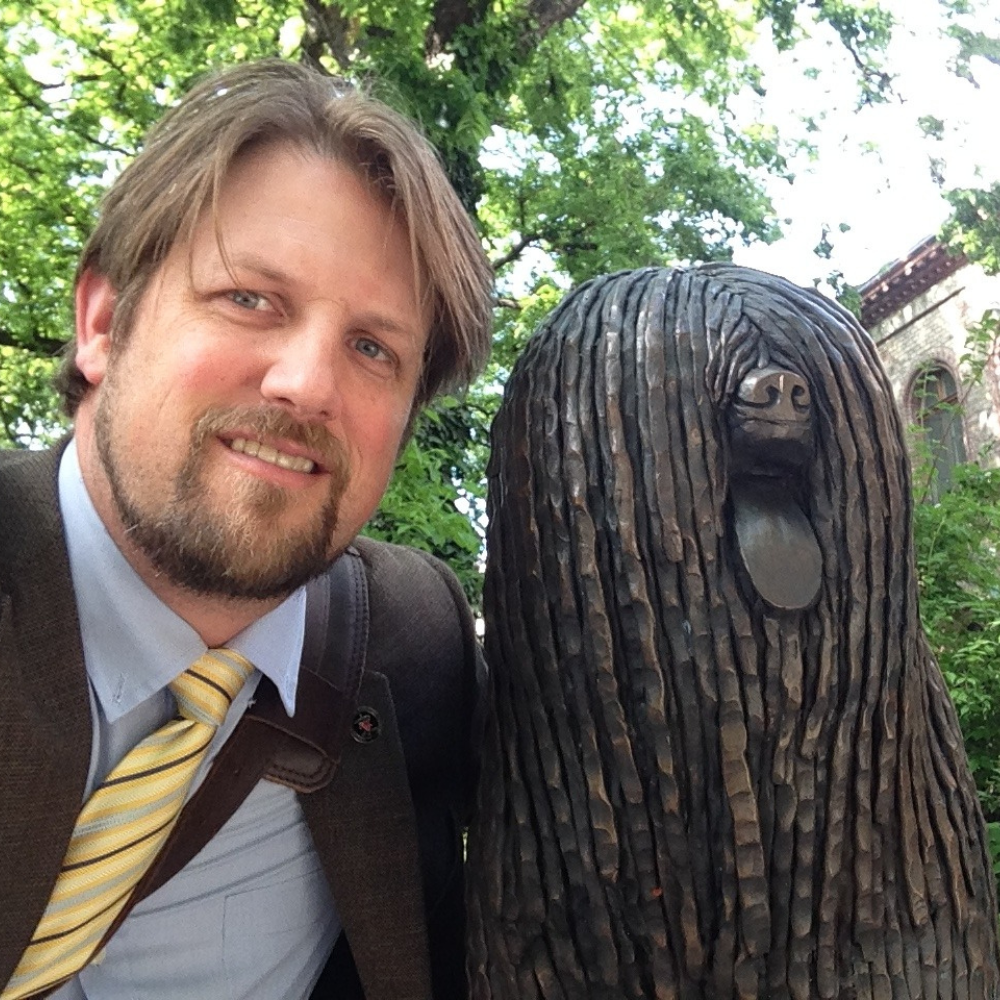
The Puli breed statue in Hungary.
Checking on the newborn pups of a successful Kokopelli-managed Puli breeding.
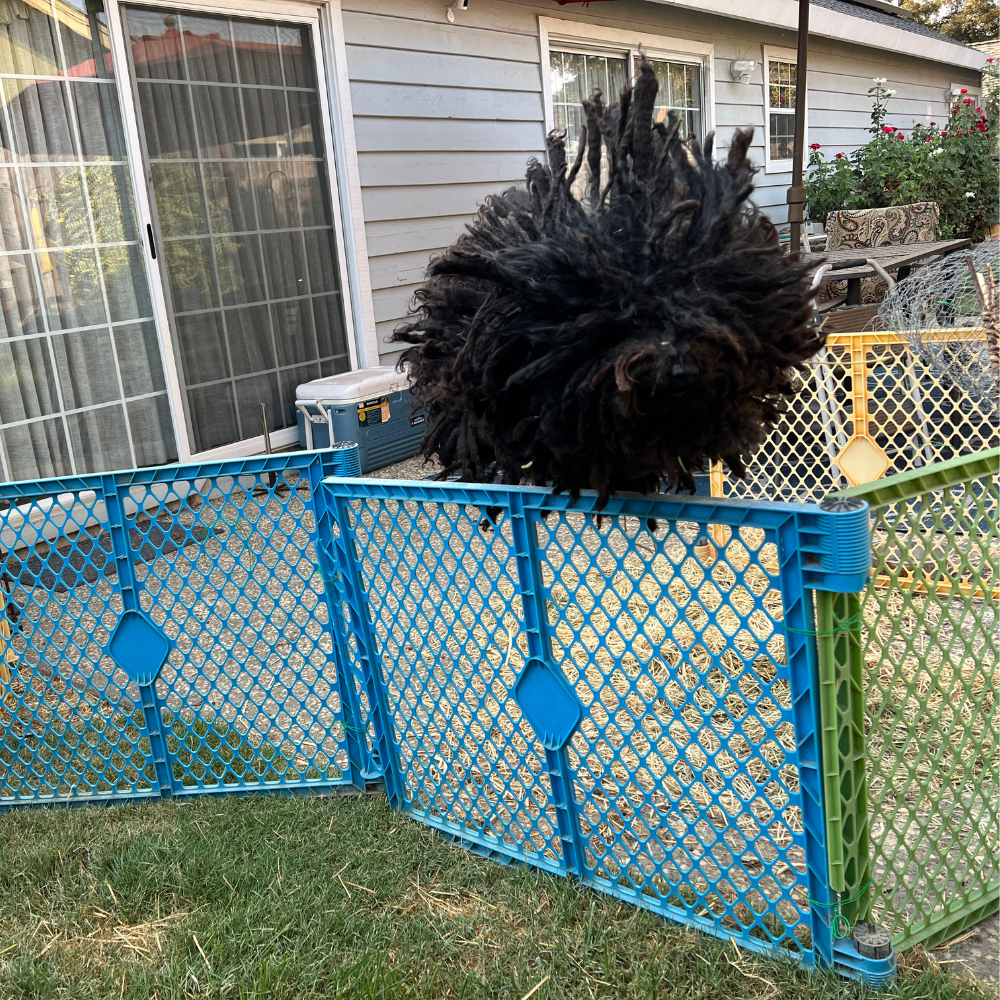
A Puli pup jumps for joy!
In a previous blog, I described using my skills in theriogenology to help save endangered species. Those same clinical skills help to preserve rare and endangered breeds of domestic animals. In fact, tools used to help preserve wild species, such as in vitro fertilization, artificial insemination, embryo transfer, cloning, and cryopreservation (freezing) of sperm, eggs, or embryos, were first developed in domestic animals. But reproducing an endangered animal is only productive if that animal has somewhere to live and thrive.
With endangered wildlife, efforts to save a species through assisted breeding programs can only be ultimately successful if the species can be returned to its natural environment. Our work with the Mexican Gray Wolf is paying off because there is plenty of habitat available in the southwestern US and Mexico for wolves and hunting pressure is greatly relieved now that they are protected by law. On the other hand, we worry about the persistence of polar bear populations because their habitat is melting away. Without ice fields, they are not adapted to survive elsewhere.
For our endangered domestic species, the situation is comparable. The “natural environment” for domestic species is with people, in our homes or on our farms. Family farms have mostly ceased to exist with the modernization of agricultural practices. Endangered, heritage farm animal breeds will only persist if there are enough hobby farmers interested in each breed. As for endangered dog breeds…well, breeding dogs is easy. We are very good at breeding dogs. We can freeze semen for decades. We can transport semen across the world and across time. But we can only save an endangered breed if their habitat (interested, caring family homes) continues to exist. With endangered wildlife we try to ensure that habitat exists by educating people sharing the habitat so we can mitigate those previous risks to the species, whether it was hunting or habitat destruction. With endangered domestic breeds, the only way we can ensure continued “habitat” is also education, hoping to attract attention and interest so that families will become part of the crusade.
With endangered wildlife, we feel a responsibility as humans to help preserve biodiversity in all its forms since it took Nature thousands or millions of years to create each species and (most of the time) mankind is responsible for the precipitous decline towards extinction. Once that species is gone, it will never return. Nature will not create it again.
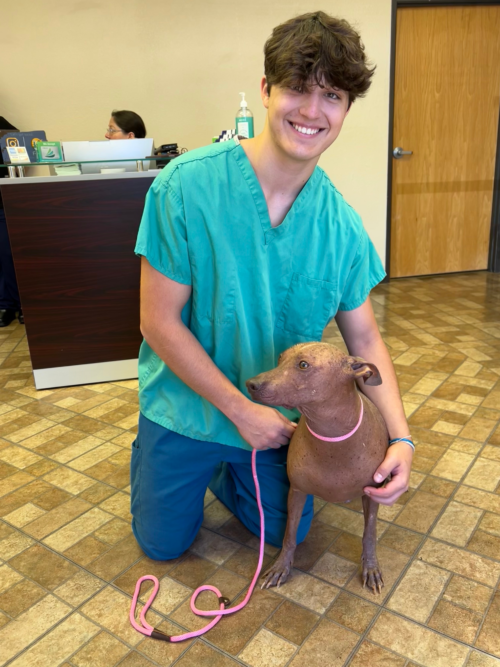
Parker with a Peruvian Hairless (rare breed).
We feel a similar responsibility to preserve endangered domestic breeds. The big difference is that mankind is responsible for both the creation and loss of these breeds. In all cases, different breeds were created for specific purposes. In many cases, these purposes are no longer as prevalent as they once were. Most people who own a terrier do not use it for “vermin” control. Owners of herding breeds usually do not own sheep or cattle. In cases where owners still use their dogs for their intended purposes, like hunters, people are no longer tied to local breed options and can choose a popular breed which originated from a foreign land. Italian hunters can easily obtain the hugely popular German Shorthaired Pointer and are not restricted to the equally talented Bracco Italiano. Preservation of endangered breeds is a nostalgic crusade driven by personal passions, and not necessity or utility. Game wardens no longer use Otterhounds to protect fish ponds and so its continued existence is in the hands of families who want a large, boisterous, water-loving dog. With 30 terrier breeds to choose from, it is a curiosity that some, like the Yorkie and the Norwich, continue to ride the popular wave, while similar breeds, like the Silky and Glen of Imaal, are at risk of fading into obscurity. And how does a German Pinscher compete against the very similar and popular Doberman?
In the end, we have the tools to save endangered breeds, but salvation will only happen if there are enough human homes to house them. The sad truth is that some breeds will go extinct because their place in society has faded to nothing. Their original purpose for being created no longer exists and they have failed to subsequently capture the fancy of modern families. My family may never own sheep, but life without a boucy, twirling, happy Puli would feel empty to us, so we will be doing our part to maintain an uncommon breed. And professionally I am always thrilled to assist dedicated breeders of uncommon and rare breeds. I hope we keep on seeing them.


8 Comments. Leave new
Thank you for all you do! I appreciate you preserving our grand champion boy for future breedings
Many thanks to the team at Kokopelli for helping me produce my most recent litter of Magyar Agárak. I hope to be bringing another one of my girls to you within the next couple of years so that she can be bred as well.
Having Sussex spaniels I understand trying to preserve an endangered breed. On the other hand, Nature has been creating and eliminating animal species forever. Who are we to decide what survives and what does not? No right answer here but something to think about.
p.s. Love the shorter hair cut 🙂
My dog breed is the Smooth Fox Terrier. This year is my 40th year in the breed, but I’m in my mid 70’s now and have not bred a litter in 5 years. I do have a great breeder, in Hungary (!) I work with, and just brought 2 mor pups over that are out of my girl they have. We have worked together for 4 generations now.
Love your Blog, and when u can get some time u want to take some of your seminars.
All the best, Foxwell Fox Terriers
What a wonderful article! I am a Preservation Breeder of a rare breed called the Shikoku. They are Japan’s most rare of the 6 native dog breeds. I am so grateful to Dr. Christensen and his team for their help with my litters in the past! I had this discussion just last week about holding off on a breeding, because I had too many pull out of their commitment to get a puppy. So having the interest in the breed by doing outreach and education is very important. Our local club just did an educational booth at SF and Cupertino Cherry Blossom Festivals. Here in the US there are only nine Shikoku Preservation Breeders, but here on the West Coast we work together sharing our studs. The breed is something I’m very passionate in preserving and since we in the US are registering more Shikoku than they are in Japan, we truly are saving the breed from extinction. Fortunately, we have Kokopelli to assist us in that endeavor.
Very educational blog. Greatly appreciate your knowledge and drive in helping animal to continue to exist.
Very good article, loved pictures and videos. Thank you
In reading this piece I kept thinking of where is farming still a passion. The one place that keeps coming to mind is Lopez island and island in the San Juan Islands.
I believe the mind set of the people on most of those farms would be open to your quest. I’ve seen them farming with horse and plow and trying to maintain past generations of farmers.
Just a thought.
:0)